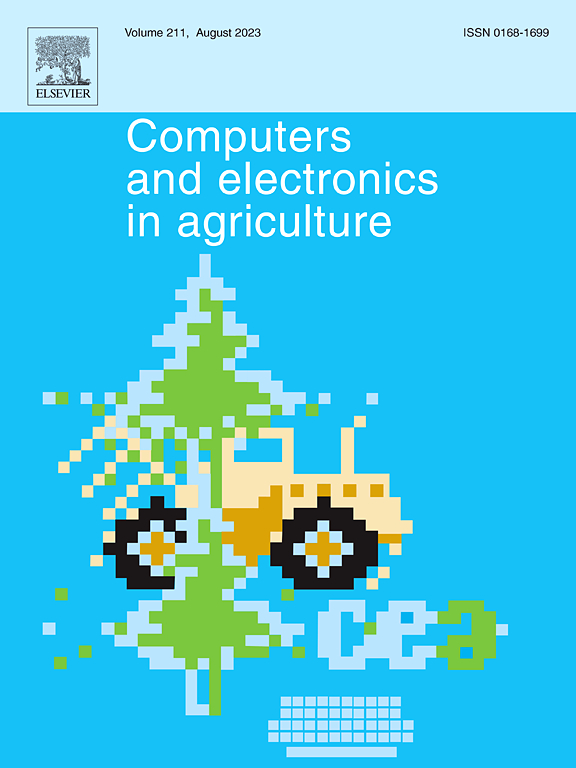Neural network-based method for contactless estimation of carcass weight from live beef images
IF 7.7
1区 农林科学
Q1 AGRICULTURE, MULTIDISCIPLINARY
引用次数: 0
Abstract
Accurately estimating the carcass weight of the live beef cattle is crucial in the breeding industry as it is essential for evaluating the quality and production capacity of beef cattle and directly impacts the economic benefits of breeding farms. Although current animal husbandry research predominantly focuses on estimating live body weight, few studies explore the relationship between live images and carcass weight. Additionally, existing methods for estimating carcass weight rely on manually measured body dimensions, a process that is time-consuming, laborious, and compromises animal welfare. In this study, we propose a contactless method utilizing dual-input deep neural networks to estimate the carcass weight of live beef cattle, and explore the impact of both top and side views images on the estimation results while performing experimental analyses of specific scenarios encountered in practical applications to highlight the model’s robustness. The feature extraction network employs two SE-ResNeXt-50 models to extract back features from top view images and abdominal features from side view images, respectively. By merging the extracted information from both views, the combined features are processed through a network to obtain the estimated carcass weight. The proposed model has been trained and tested on a dataset collected by our team, demonstrating superior performance compared to other typical deep learning models across four indicators: MAE, RMSE, MAPE, and R2, particularly achieving a notable RMSE of 17.713 kg. Ablation experiments are conducted to validate the contributions of the group convolution structure and the Squeeze and Excitation (SE) block. Overall, the method presented in this study bears significant implications for animal quality and production capacity evaluation in the breeding industry.
求助全文
约1分钟内获得全文
求助全文
来源期刊

Computers and Electronics in Agriculture
工程技术-计算机:跨学科应用
CiteScore
15.30
自引率
14.50%
发文量
800
审稿时长
62 days
期刊介绍:
Computers and Electronics in Agriculture provides international coverage of advancements in computer hardware, software, electronic instrumentation, and control systems applied to agricultural challenges. Encompassing agronomy, horticulture, forestry, aquaculture, and animal farming, the journal publishes original papers, reviews, and applications notes. It explores the use of computers and electronics in plant or animal agricultural production, covering topics like agricultural soils, water, pests, controlled environments, and waste. The scope extends to on-farm post-harvest operations and relevant technologies, including artificial intelligence, sensors, machine vision, robotics, networking, and simulation modeling. Its companion journal, Smart Agricultural Technology, continues the focus on smart applications in production agriculture.
 求助内容:
求助内容: 应助结果提醒方式:
应助结果提醒方式:


